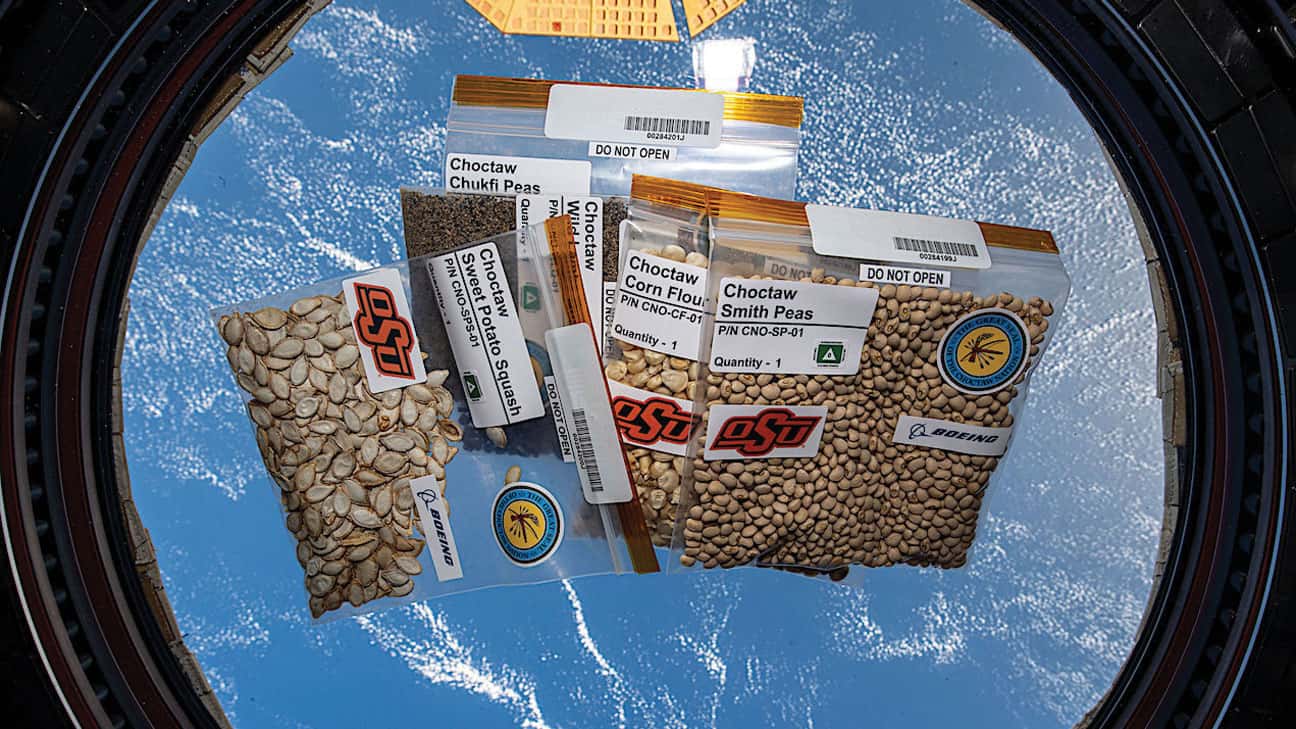
Five varieties of seeds are pictured inside the ISS cupola.
Seeds in space: Choctaw Nation’s heirloom seeds launched to ISS
Published January 5, 2024By Christian Chaney
Choctaw Nation of Oklahoma’s (CNO) heirloom seeds have embarked on a unique journey to the International Space Station through a collaboration with Boeing.
Five types of seeds will be exposed to microgravity for several months before returning to Earth.
Upon return, the seeds will be grown alongside non-flown space seeds.
Native American youth at Jones Academy will then study and observe the growth of both seed groups in a CNO Growing Hope garden.
Students will develop hypotheses and perform experiments to see whether the seeds exposure to space affects their growth.
This project, funded by Boeing, combines science education, space exploration and cultural heritage. In 2018, Boeing announced its partnership with CNO with the goal of advancing STEM (science, technology, engineering and math) education.
To ensure the safety and flight certification of the heirloom seeds, Boeing’s Research Integration team collaborated with the local Boeing Employees Indigenous Network.
The seeds launched on SpaceX’s 29th Commercial Resupply Services mission.
The heirloom seeds en route to the ISS are isito (Choctaw sweet potato squash), tobi (Choctaw Smith peas), tanchi tohbi (Choctaw flour corn), tvnishi (Choctaw lambsquarter) and chukfi (Choctaw peas).
The significance of Choctaw heirloom seeds is deeply rooted in the cultural and agricultural legacy of the Choctaw Nation.
Handed down through generations, these seeds represent unique crop varieties with significant cultural value.
Preserving the historical agricultural heritage of the CNO relies on the cultivation of these heirloom seeds.
Over many generations, Choctaw ancestors developed distinct types of corn, beans, pumpkin and other plants.
However, the adoption of “Western” crop varieties and a decline in traditional farming practices among Choctaw families have led to the disappearance of these heirloom plants, resulting in a loss of traditional foods and nutrition within Choctaw communities.
In recent years, the CNO Historic Preservation Department has worked with community members and diverse partners to accurately document the appearance of various heirloom Choctaw plants and locate their seeds before they are lost.
The ultimate goal is to preserve these heirloom varieties and establish a seed bank for potential distribution to Choctaw tribal members interested in growing them in their gardens.
The story of the seeds’ voyage in space and the outcomes of the students’ experiments will be integrated into the middle school earth-sky STEM curriculum designed for the NASA Science Activation program, Native Earth | Native Sky, at OSU.
Following the completion of the seed project, the curriculum will be accessible as a no-cost open educational resource starting in early 2024.
To receive seeds and informational resources, contact CNO’s Growing Hope program at 918-567-3709 ext. 1016 or visit their webpage to apply online.
Applications are available from January to April each year, and seeds are mailed on a first come, first served basis while supplies last.

